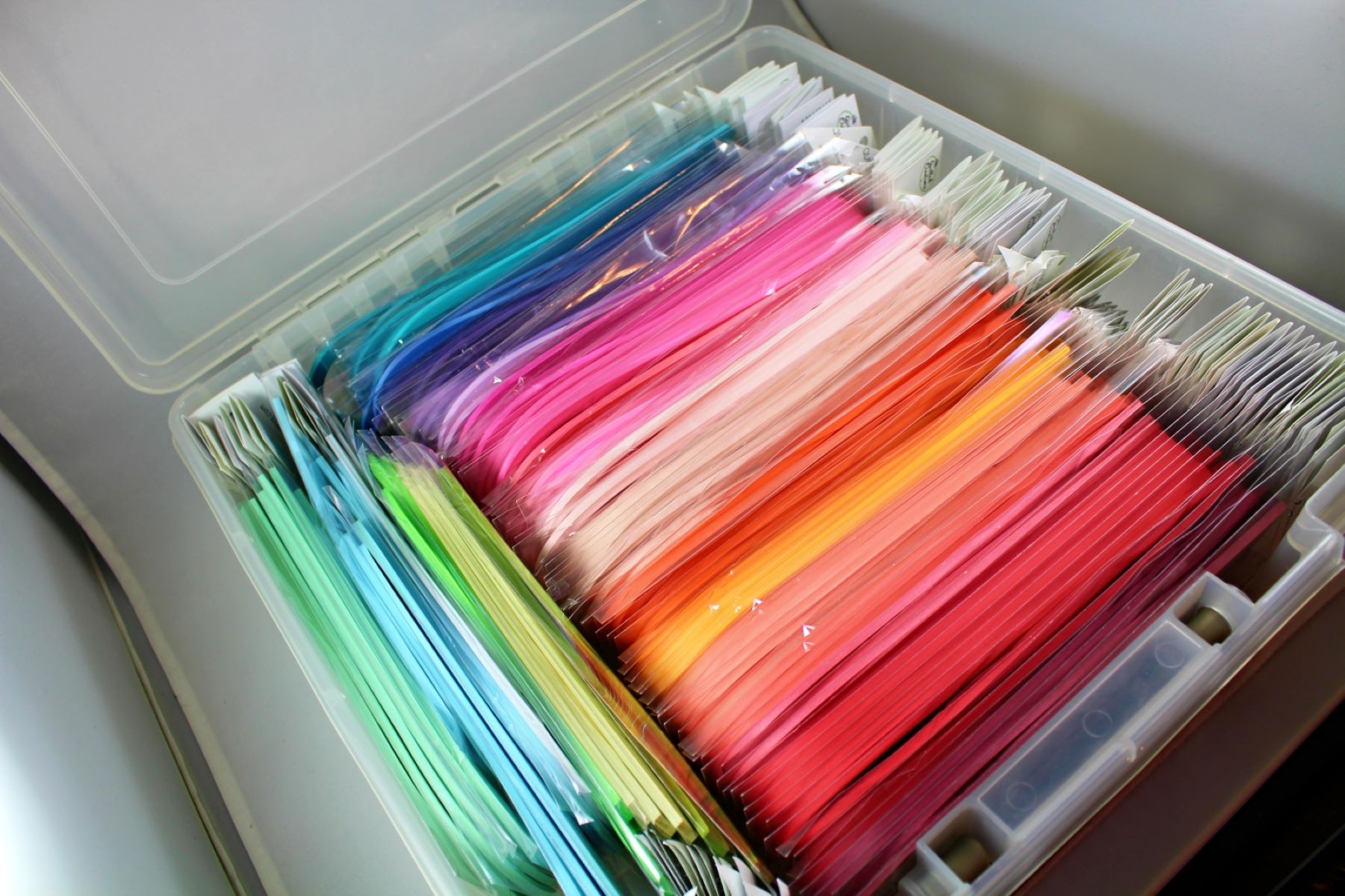

Articles
How To Store Quilling Paper
Modified: January 19, 2024
Learn the best methods for storing quilling paper in this informative article. Keep your supplies organized and protected for future creative projects.
(Many of the links in this article redirect to a specific reviewed product. Your purchase of these products through affiliate links helps to generate commission for Storables.com, at no extra cost. Learn more)
Introduction
Welcome to the world of quilling, a beautiful and intricate art form that involves rolling and shaping strips of paper to create stunning designs. If you are a quilling enthusiast, you know that selecting the right paper for your projects is crucial. But have you ever stopped to consider how important it is to store your quilling paper properly? Proper storage not only ensures that your paper stays in pristine condition, but it also makes it easier to access and work with when inspiration strikes.
In this article, we will explore the various options for storing your quilling paper and provide you with guidelines on how to do it effectively. From plastic containers to craft organizers, we will discuss different storage solutions that will keep your quilling paper organized and protected. Additionally, we will share some tips on how to handle your quilling paper properly to maintain its quality over time.
So, whether you are a seasoned quiller or just starting out on your quilling journey, read on to discover the best practices for storing and handling your quilling paper.
Key Takeaways:
- Proper storage and handling of quilling paper is crucial for maintaining its quality, longevity, and usability. Organize, protect, and label your paper to ensure easy access and preservation.
- By following guidelines for storage and handling, you can maintain the integrity of your quilling paper, promote creativity, and enjoy a stress-free and efficient quilling experience.
Read more: How To Store Paper Documents
What is Quilling Paper
Quilling paper is a specialized type of paper used in the art of quilling. Quilling, also known as paper filigree, is the art of rolling and shaping narrow strips of paper into various designs. The paper used for quilling is typically lightweight and comes in a variety of colors and widths.
The most commonly used quilling paper is known as “strips,” which are long, narrow strips of paper usually measuring around 1/8 inch or 3mm in width. These strips can be made from different materials, including plain paper, metallic-coated paper, and even textured paper. The width and thickness of the paper strips can vary depending on the desired result and the intricacy of the design.
Quilling paper is specially designed to be flexible and easy to work with. It needs to be firm enough to hold its shape when rolled or manipulated, yet pliable enough to bend and curve smoothly. The paper’s weight and texture also play a role in the final appearance of the quilled design, adding depth and dimension to the artwork.
Quilling paper is available in a wide range of colors, making it easy for quillers to create vibrant and eye-catching designs. Some quilling paper sets come with pre-cut strips in various colors, while others are sold in individual packs or rolls that allow quillers to choose their preferred colors and widths.
While quilling paper is the most commonly used material in quilling, it is worth noting that other materials can also be used in combination with paper. Some quillers incorporate elements like beads, ribbons, or even fabric into their designs to add extra texture and visual interest.
Now that you have a basic understanding of what quilling paper is, let’s explore why proper storage of this delicate material is so important.
Why is Proper Storage Important
Proper storage of quilling paper is crucial to maintaining its quality and ensuring that it remains in pristine condition. Here are a few reasons why proper storage is important:
- Protection from external factors: Quilling paper is delicate and susceptible to damage from moisture, light, dust, and heat. Proper storage helps protect the paper from these external factors, preventing it from warping, fading, or deteriorating. This ensures that your quilling paper remains vibrant and usable for a longer period of time.
- Prevention of bending and creasing: Quilling paper is often stored in long, narrow strips, which are prone to bending or creasing if not stored properly. Proper storage methods help eliminate or minimize the risk of bending and creasing, ensuring that your paper stays flat and ready for use.
- Easy accessibility: Storing your quilling paper in an organized manner makes it easier to access the colors and widths you need for your projects. This saves you time and effort searching through piles of paper to find the right shade or size, allowing you to focus more on your creative process.
- Longevity of paper: Proper storage significantly extends the lifespan of your quilling paper. By keeping it protected and well-organized, you can use the same paper for multiple projects over an extended period of time. This not only saves you money but also ensures that you always have a variety of colors and widths readily available.
- Promotion of creativity: When your quilling paper is stored neatly and easily accessible, it promotes a more organized and inspiring working environment. You’ll be more motivated to create and experiment with different designs when you can see and easily access your collection of quilling paper.
Now that you understand the importance of proper storage, let’s explore some guidelines for storing your quilling paper effectively.
Guidelines for Storing Quilling Paper
When it comes to storing your quilling paper, there are some key guidelines to keep in mind to ensure its longevity and easy accessibility. Follow these tips to store your quilling paper effectively:
- Keep it in a cool, dry place: Moisture is quilling paper’s worst enemy as it can cause the paper to warp and lose its shape. Store your quilling paper in a cool, dry place away from direct sunlight and humidity. A climate-controlled room or a closet is an ideal location.
- Organize by color and size: Group your quilling paper strips by color and size. Keeping them organized makes it easier to find the specific paper you need for your projects and allows for quick and efficient access.
- Avoid exposure to light: Prolonged exposure to direct sunlight or bright indoor lighting can cause the colors of your quilling paper to fade over time. Store your paper in a container or drawer that protects it from excessive light exposure.
- Use acid-free containers: Acidic materials can cause the paper to degrade and discolor over time. Store your quilling paper in acid-free containers or envelopes to ensure its longevity. This will help preserve the quality and vibrancy of the paper for years to come.
- Avoid overcrowding: Do not overstuff your storage containers or bags with too many quilling paper strips. Overcrowding can lead to bending, creasing, or even tearing of the paper. Leave enough space for the strips to lie flat and remain undisturbed.
- Label containers: If you have multiple storage containers or bags for your quilling paper, label them accordingly. Clearly mark the sizes and colors of the paper stored in each container. This will save you time and prevent confusion when searching for specific paper strips.
- Regularly inspect and discard damaged paper: Periodically check your quilling paper collection for any signs of damage such as water stains, tears, or discoloration. Remove and discard any damaged paper to prevent it from affecting the other strips.
- Consider temperature and humidity: Extreme temperatures and high humidity can impact the quality of your quilling paper. Avoid storing it in areas prone to temperature fluctuations or excessive moisture, such as basements or attics.
By following these guidelines, you can ensure that your quilling paper is stored in the best possible condition, allowing you to create beautiful quilled designs whenever inspiration strikes.
Now, let’s explore some popular options for storing quilling paper.
Option 1: Store in a Plastic Container
One popular and affordable option for storing quilling paper is to use a plastic container. Plastic containers are widely available and come in various sizes and designs to fit your specific needs.
Here’s how you can effectively store your quilling paper in a plastic container:
- Select an appropriate container: Choose a plastic container that is large enough to accommodate your quilling paper strips without bending or folding them. Opt for a container with a snap-on lid or airtight seal to keep out any moisture or dust.
- Organize by color and size: Sort your quilling paper strips by color and size. You can use separate compartments within the plastic container or individual ziplock bags to keep each color or size group together.
- Label containers: To make it easier to find the desired paper strips, consider labeling each compartment or bag with the color and width of the quilling paper it contains. This will save you time and enable you to quickly locate the specific paper strips you need for your projects.
- Add protective dividers: If your plastic container does not come with compartments, you can create your own dividers using cardboard or foam sheets. Cut them to fit inside the container and create separate sections for different colors or sizes of quilling paper.
- Stack or store vertically: Depending on the size and shape of your plastic container, you can stack multiple containers on top of each other or store them vertically on a shelf. This will help optimize your storage space while keeping your quilling paper easily accessible.
- Keep it away from direct sunlight: Ensure your plastic container is stored in a cool, dry place away from direct sunlight. Excessive exposure to sunlight can fade the colors of your quilling paper over time.
Storing your quilling paper in a plastic container allows for easy organization, protection from external factors, and convenient access to your paper strips whenever you need them.
Now that you know one option for storing your quilling paper, let’s explore another popular choice: using ziplock bags.
Store quilling paper in a cool, dry place away from direct sunlight to prevent fading and discoloration. Keep the paper flat to avoid bending or warping. Consider using a plastic storage container with dividers to keep different colors organized.
Read more: How To Store Wrapping Paper
Option 2: Use Ziplock Bags
Another convenient option for storing your quilling paper is to use ziplock bags. Ziplock bags provide a flexible and portable storage solution that keeps your paper strips safe and organized.
Here’s how you can effectively store your quilling paper using ziplock bags:
- Choose the right size of bags: Select ziplock bags that are large enough to comfortably fit your quilling paper strips without folding or bending them. Consider using different sizes of bags based on the length and width of your paper strips.
- Categorize by color or size: Sort your quilling paper strips into different ziplock bags based on color or size. This will help you easily locate the specific paper strips you need for your projects, especially if you have a large collection of quilling paper.
- Label the bags: To avoid confusion, label each ziplock bag with the color and width of the quilling paper it contains. Use a permanent marker or sticker labels to clearly mark the bags for quick identification.
- Remove excess air: Before sealing the ziplock bags, try to remove as much excess air as possible. This will help prevent the paper strips from shifting or getting damaged during storage.
- Store in a container or box: To keep your ziplock bags neatly organized, consider storing them in a plastic container or a cardboard box. This will prevent them from getting crushed or misplaced and make it easier to access the bags when needed.
- Protect from light and moisture: Ensure that the container or box where you store the ziplock bags is kept in a cool, dry place away from direct sunlight. This will help maintain the quality and vibrancy of your quilling paper over time.
- Consider using separate bags for individual colors: For more precise organization, you may choose to have separate ziplock bags for each individual color. This can be especially beneficial if you work with a wide range of colors and want to easily locate specific shades for your projects.
Using ziplock bags for storing your quilling paper allows for easy organization, compact storage, and protection from potential damage. It also makes it convenient to take your quilling paper with you on the go if you like to quill while traveling or attending workshops.
Now that you are familiar with storing quilling paper using ziplock bags, let’s explore another option: utilizing a craft organizer.
Option 3: Utilize a Craft Organizer
If you’re someone who enjoys quilling and other craft projects, investing in a craft organizer can be a fantastic option for storing your quilling paper. Craft organizers are specifically designed to hold various crafting supplies, including quilling paper, in a neat and organized manner.
Here’s how you can effectively store your quilling paper using a craft organizer:
- Select a suitable craft organizer: Look for a craft organizer that has compartments or drawers specifically designed to accommodate quilling paper strips. Ensure that the size and dimensions of the compartments are suitable for your quilling paper.
- Organize by color and size: Sort your quilling paper strips by color and size and allocate separate compartments or drawers for each category. This will make it easy to find the specific paper strips you need for your projects, saving you time and effort.
- Consider adjustable dividers: Some craft organizers come with adjustable dividers that allow you to customize the size of each compartment to fit different widths of quilling paper. This flexibility ensures that your paper strips are snugly stored and prevents them from bending or shifting.
- Label the compartments or drawers: To enhance organization and quick identification, label each compartment or drawer based on the color or width of the quilling paper it contains. You can use adhesive labels, color-coded stickers, or even write directly on the organizer.
- Ensure easy access: Arrange your craft organizer in a way that allows for easy access to the quilling paper. Keep the organizer within reach of your workspace so that you can quickly retrieve the desired paper strips without any hassle.
- Protect from light and dust: Craft organizers often come with lids or covers. Make sure to keep the organizer closed when not in use to protect your quilling paper from exposure to light and dust, which can cause damage or discoloration over time.
- Consider additional storage features: Some craft organizers offer additional storage compartments or pockets where you can store quilling tools, glue, or other related supplies. This allows you to keep all your quilling essentials in one place, making your crafting process more efficient.
Using a craft organizer not only provides dedicated storage for your quilling paper but also helps keep your other crafting supplies organized and easily accessible. By investing in a quality craft organizer, you can create a dedicated space for your quilling needs and enjoy a stress-free and efficient quilling experience.
Now that you are acquainted with using a craft organizer for storing your quilling paper, let’s explore another option: creating custom storage solutions.
Option 4: Create Custom Storage Solutions
If you enjoy DIY projects and want a personalized approach to storing your quilling paper, creating custom storage solutions can be a fun and practical option. By using your creativity and considering your specific needs, you can design storage solutions that perfectly suit your quilling paper collection.
Here are some ideas for creating custom storage solutions for your quilling paper:
- Cardboard dividers: Take advantage of sturdy cardboard to create dividers for your quilling paper. Cut the cardboard into strips and fold them into “U” shapes to create individual slots for each color or size of paper strip. Arrange these dividers in a box or container to keep your paper organized and protected.
- Paper racks or holders: Use wooden or plastic racks or holders typically used for organizing papers or files to store your quilling paper. Drape the paper strips over the dividers or use clips to hold them in place. This method allows for easy browsing and access to your paper collection.
- Accordion file folder: Repurpose an accordion file folder or expandable document organizer to store your quilling paper. Label each section with the color or size of the paper strips it contains. This portable solution enables you to keep your paper collection organized and easily transport it for crafting on the go.
- PVC pipe organizers: Cut PVC pipes into short sections and glue them together in a grid or stack arrangement. Nestle the paper strips into the PVC pipe sections, ensuring they remain upright and protected. This unique solution allows you to display and easily access your paper strips while adding an interesting visual element to your crafting space.
- Magazine holders: Use magazine holders with individual compartments to store your quilling paper strips. Customize the holders by labeling or color-coding each compartment for easy identification and accessibility.
- Wall-mounted storage: Install a pegboard or wall-mounted storage system in your crafting area. Attach hooks or dowels to hold your quilling paper strips, assigning each section to a specific color or size. This wall-mounted storage solution keeps your paper visible, organized, and within reach while making a decorative statement in your workspace.
- Recycled containers: Upcycle empty containers like shoeboxes, yogurt cups, or plastic bottles into storage solutions for your quilling paper. Decorate or label each container according to the color or size of the paper strips it holds. This eco-friendly approach allows you to repurpose items while keeping your paper neatly organized.
Creating custom storage solutions for your quilling paper not only gives you the opportunity to showcase your creativity but also ensures that your storage system is tailored to your specific needs. These personalized storage solutions offer easy access, protection, and a unique touch to your crafting space.
Now that you have explored various options for storing your quilling paper, let’s move on to some tips for properly handling it to maintain its quality.
Tips for Properly Handling Quilling Paper
Properly handling your quilling paper is crucial for maintaining its quality and ensuring that it remains in good condition throughout your crafting process. Here are some helpful tips to keep in mind:
- Wash your hands: Before working with your quilling paper, make sure your hands are clean and free from any oils or creams. Oils and moisture can transfer to the paper and potentially damage or warp it.
- Use clean tools: Ensure that your quilling tools, such as the quilling needle or slotted tool, are clean before using them with your paper. Any dirt or residue on the tools can transfer onto the paper and affect its appearance.
- Avoid excessive moisture: Quilling paper is sensitive to moisture, which can cause it to become limp or lose its shape. Avoid working with quilling paper in humid or damp conditions, and store your paper in a dry environment to prevent moisture-related damage.
- Handle with care: Quilling paper is delicate and can tear easily if mishandled. Take care when picking up and manipulating the paper to minimize the risk of tearing. For more intricate designs, use tweezers or needle-nose pliers to handle the paper strips and reduce contact with your fingers.
- Store partially used strips properly: If you have partially used quilling paper strips, ensure they are properly stored to prevent damage. Roll the remaining strip tightly, secure it with a paper clip or rubber band, and store it in its designated compartment or a separate container to keep it from unravelling or getting lost.
- Avoid excessive creasing: While quilling often involves shaping the paper into various forms, be mindful of excessive creasing, as it can weaken the paper and make it more prone to tearing. Gently fold and shape the paper as needed, using a smooth and light touch.
- Protect from direct sunlight: To prevent fading or discoloration, avoid exposing your quilling paper to direct sunlight for long periods. Store your finished quilled creations in a UV-protected frame or display case if you want to showcase them while keeping them safe from sun damage.
- Avoid contact with water or liquids: Quilling paper is not waterproof, and moisture can cause it to bleed or distort. Keep your paper away from water or any other liquid substances to preserve its integrity and prevent color bleeding.
- Invest in a paper quilling storage tool: Consider purchasing a paper quilling storage tool, such as a quilling comb or quilling board, to help keep your paper organized and prevent it from unraveling or tangling. These tools provide convenient compartments for storing quilling paper strips, making them easily accessible during your crafting process.
By following these tips, you can handle your quilling paper with care and ensure its longevity. Proper handling practices will not only protect the paper but also enhance the overall quality and appearance of your quilled creations.
Now that you have learned how to properly handle your quilling paper, let’s wrap up our discussion.
Read more: How To Store Paper Artwork
Conclusion
Proper storage and handling of your quilling paper are essential for maintaining its quality, longevity, and overall usability. Whether you choose to store your paper in a plastic container, use ziplock bags, utilize a craft organizer, or create custom storage solutions, the key is to keep your quilling paper organized, protected, and easily accessible.
By storing your quilling paper in a cool, dry place, categorizing it by color and size, and using acid-free containers or envelopes, you can ensure that your paper stays in pristine condition. Labeling your storage containers and regularly inspecting and discarding damaged paper will further enhance your organization and keep your collection in top shape.
In addition to proper storage, handling your quilling paper with care is vital. Washing your hands before working with the paper, using clean tools, and avoiding excessive moisture are essential steps to maintain the integrity of the paper. By handling it gently, avoiding excessive creasing, and protecting it from direct sunlight and contact with liquids, you can prevent damage and preserve the paper’s vibrant colors and shape.
Remember, your quilling paper is the foundation of your artistic creations, and taking the time to store and handle it properly will pay off in the long run. Your organized and well-maintained collection will inspire creativity and make your quilling process more enjoyable and efficient.
So, go ahead and apply these storage and handling tips to your quilling paper collection. Explore the various storage options available, or get creative and design your own custom storage solutions. With proper care and organization, your quilling paper will be ready for your next masterpiece and continue to bring joy and beauty to your quilling projects for years to come.
Frequently Asked Questions about How To Store Quilling Paper
Was this page helpful?
At Storables.com, we guarantee accurate and reliable information. Our content, validated by Expert Board Contributors, is crafted following stringent Editorial Policies. We're committed to providing you with well-researched, expert-backed insights for all your informational needs.
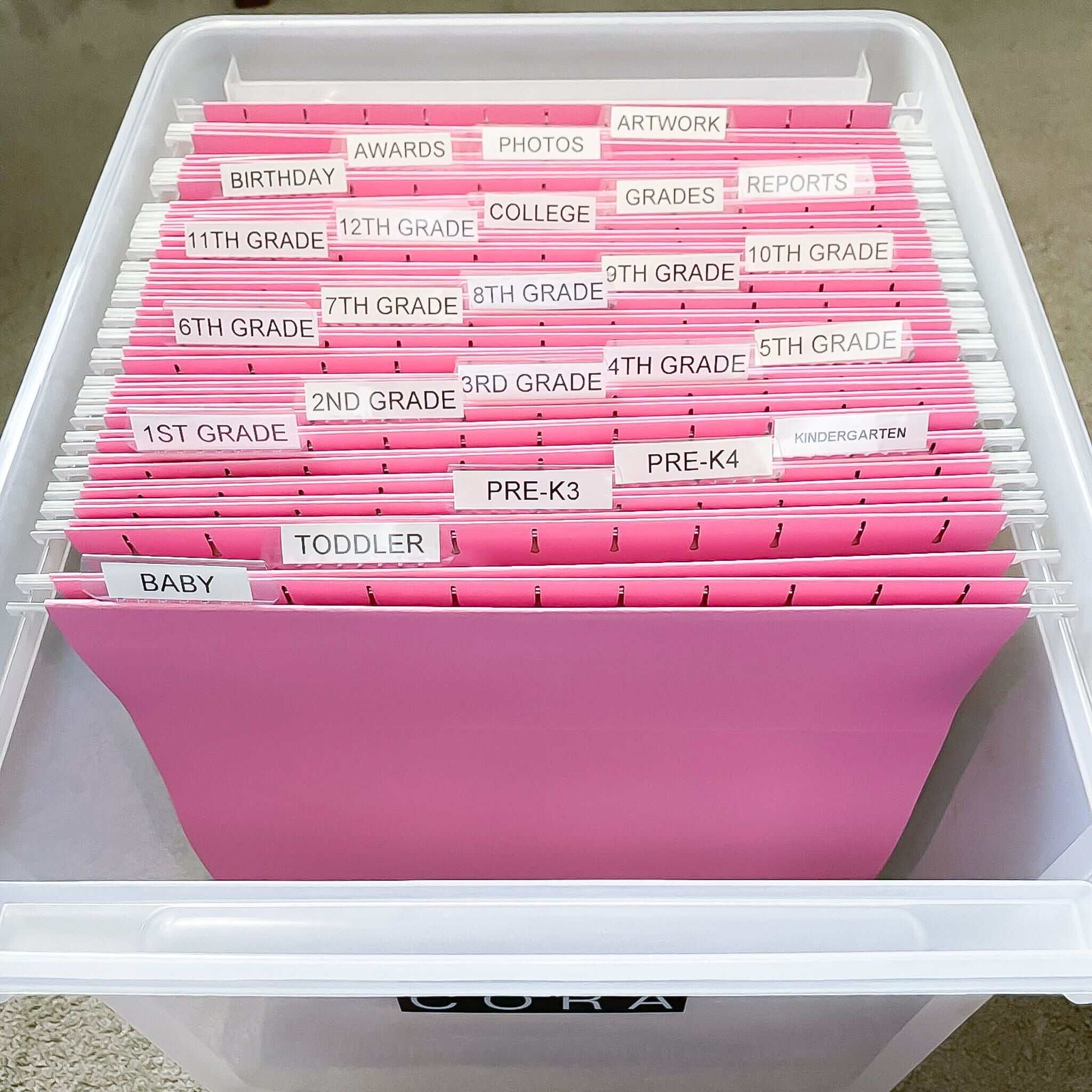
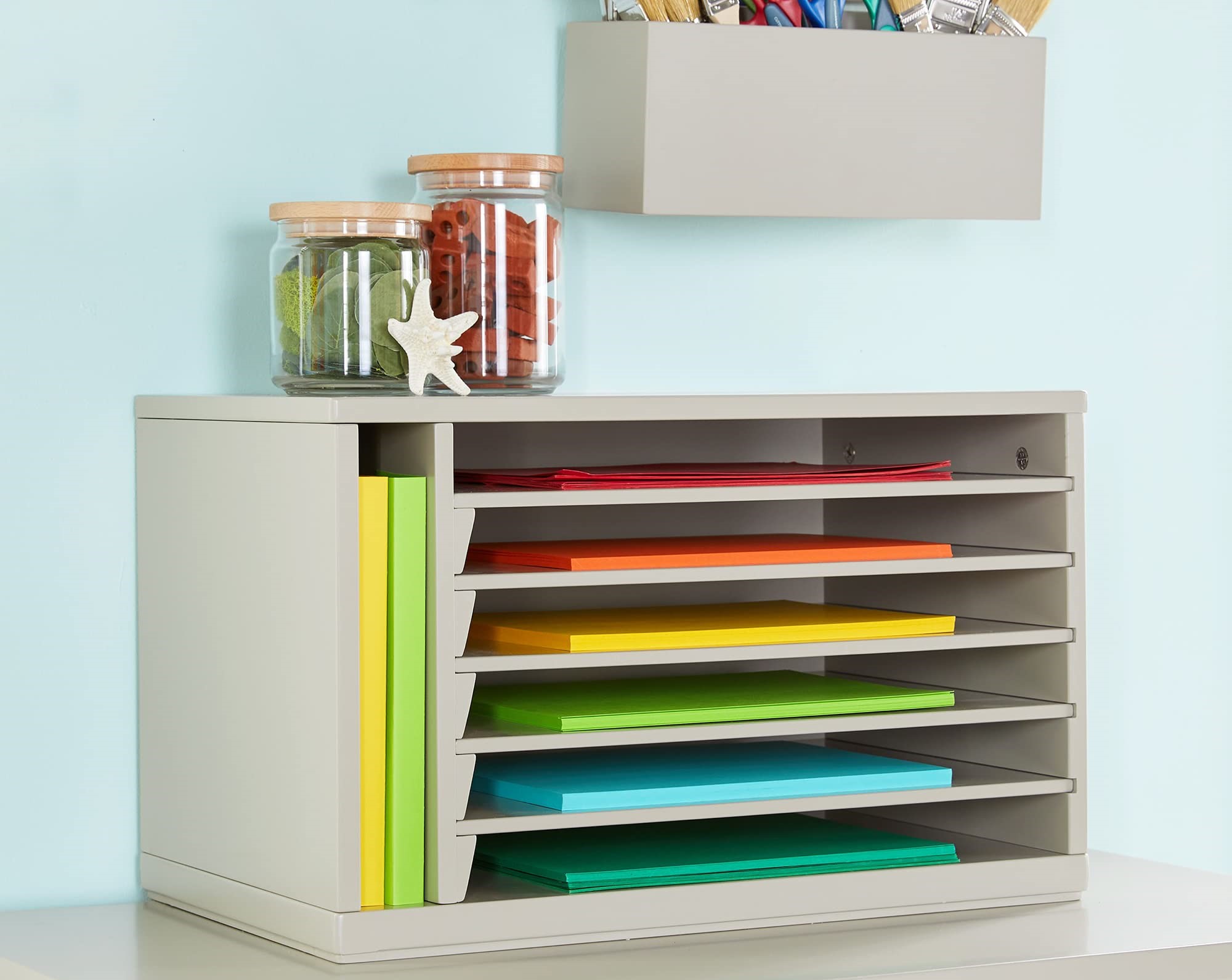
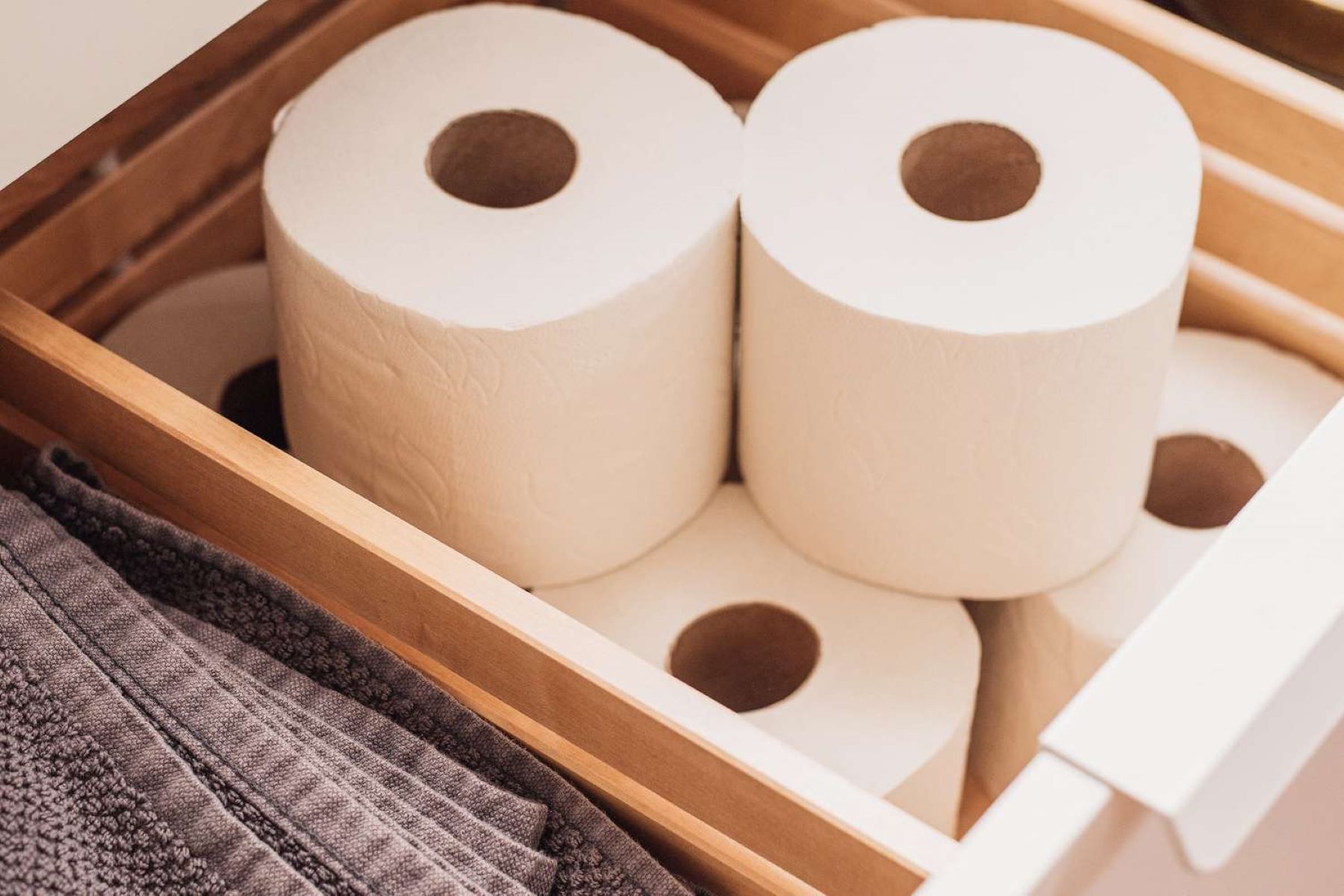
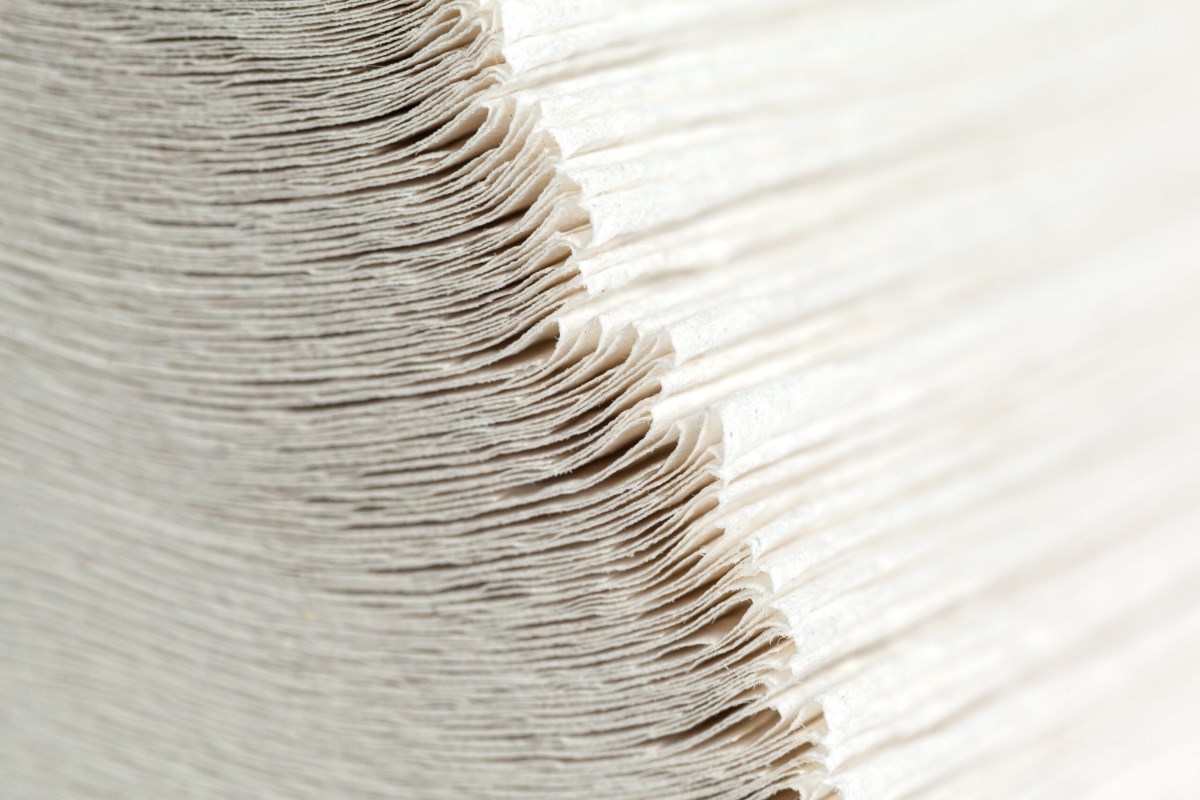
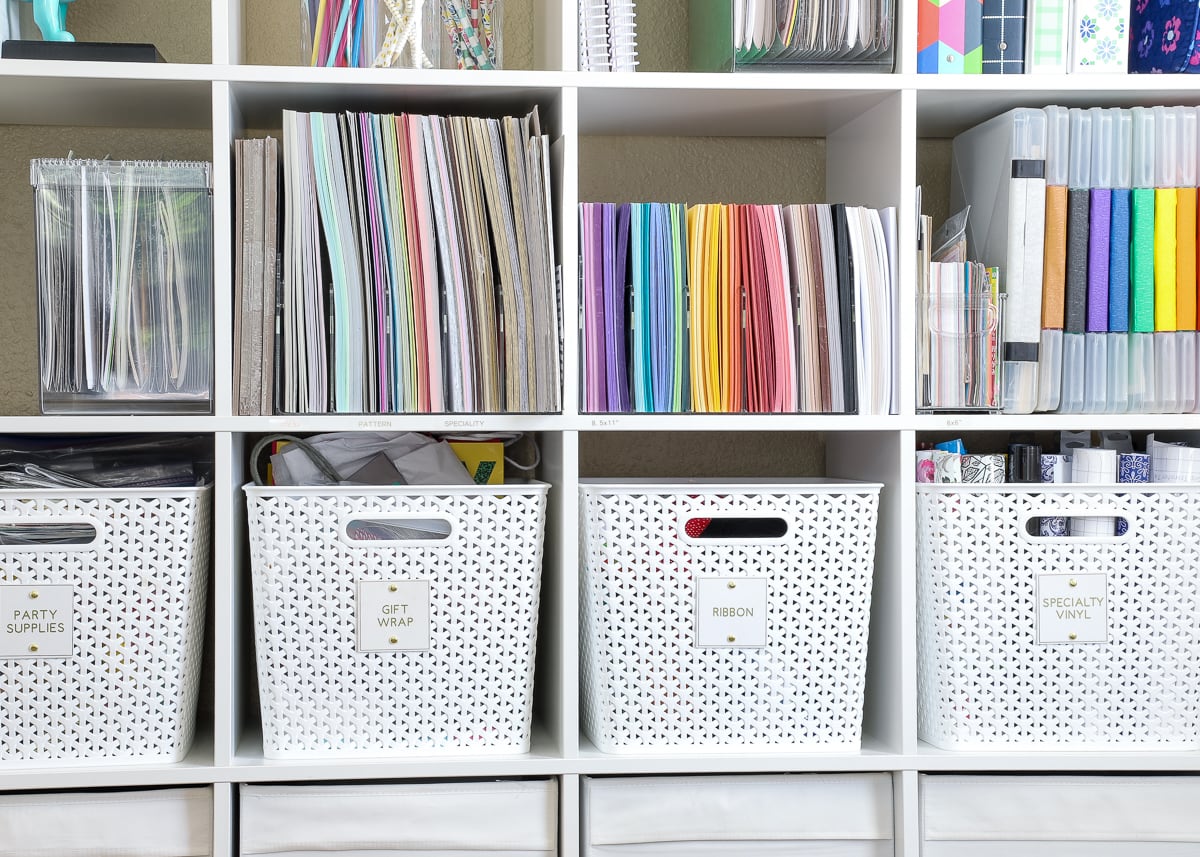
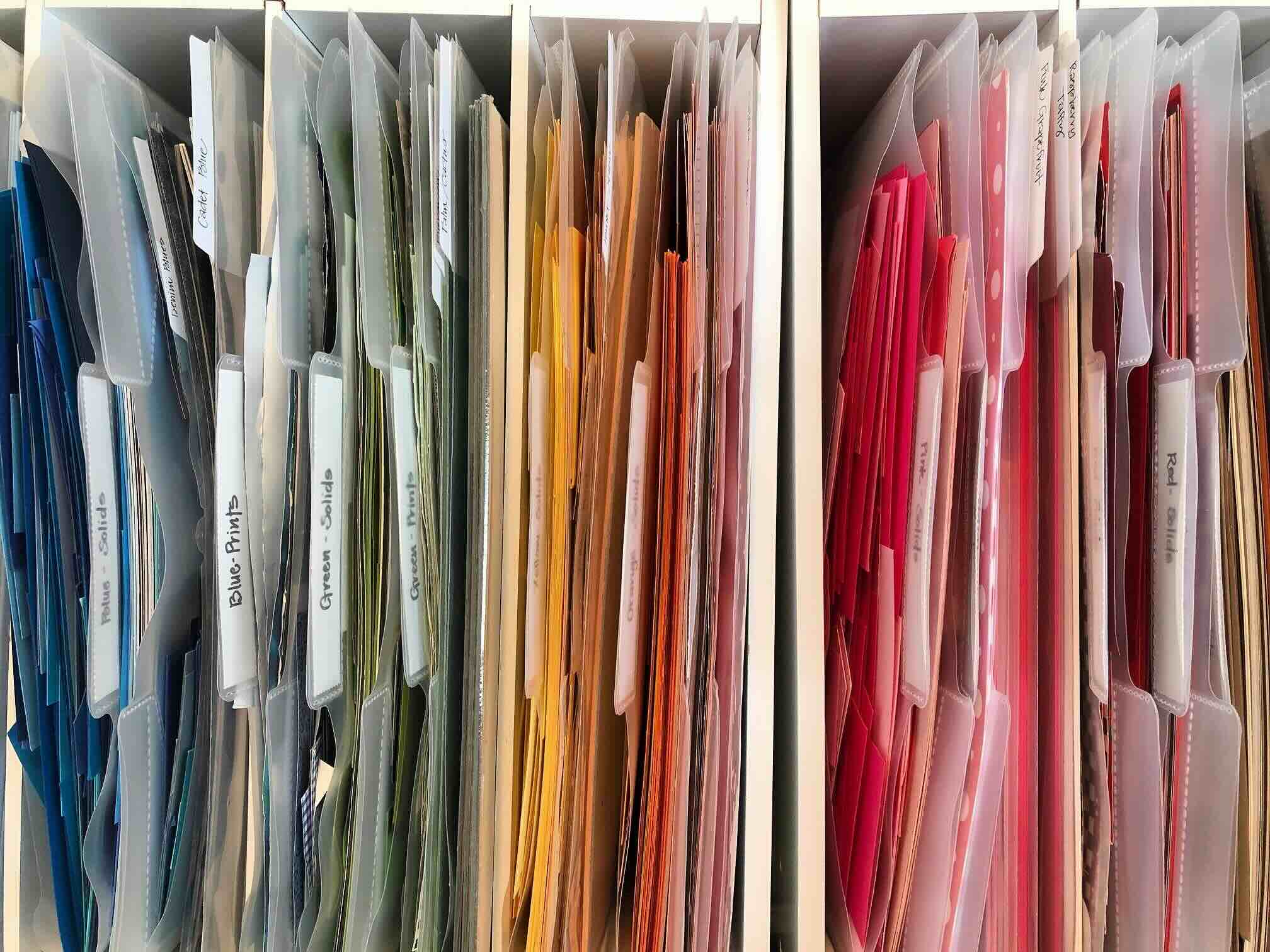
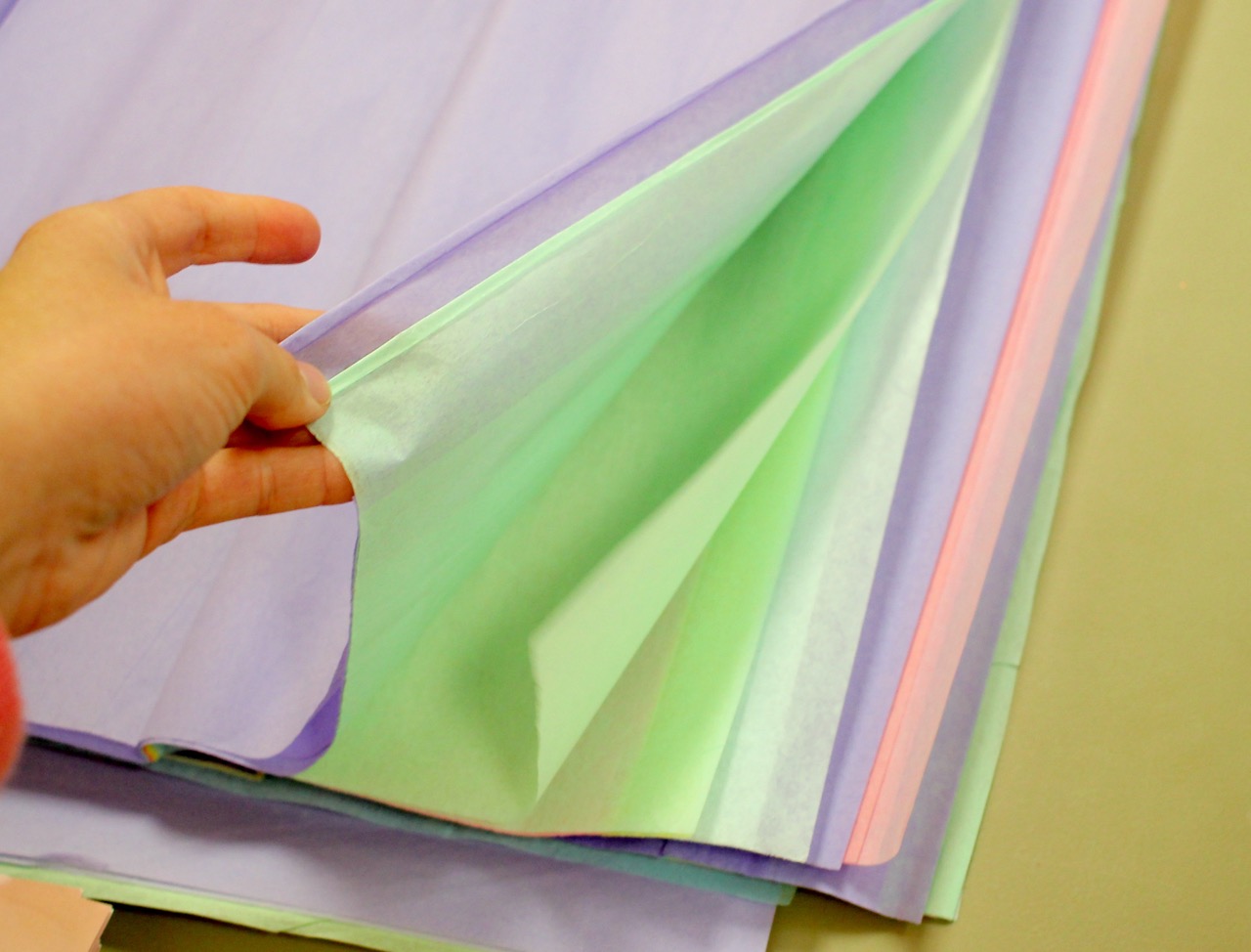


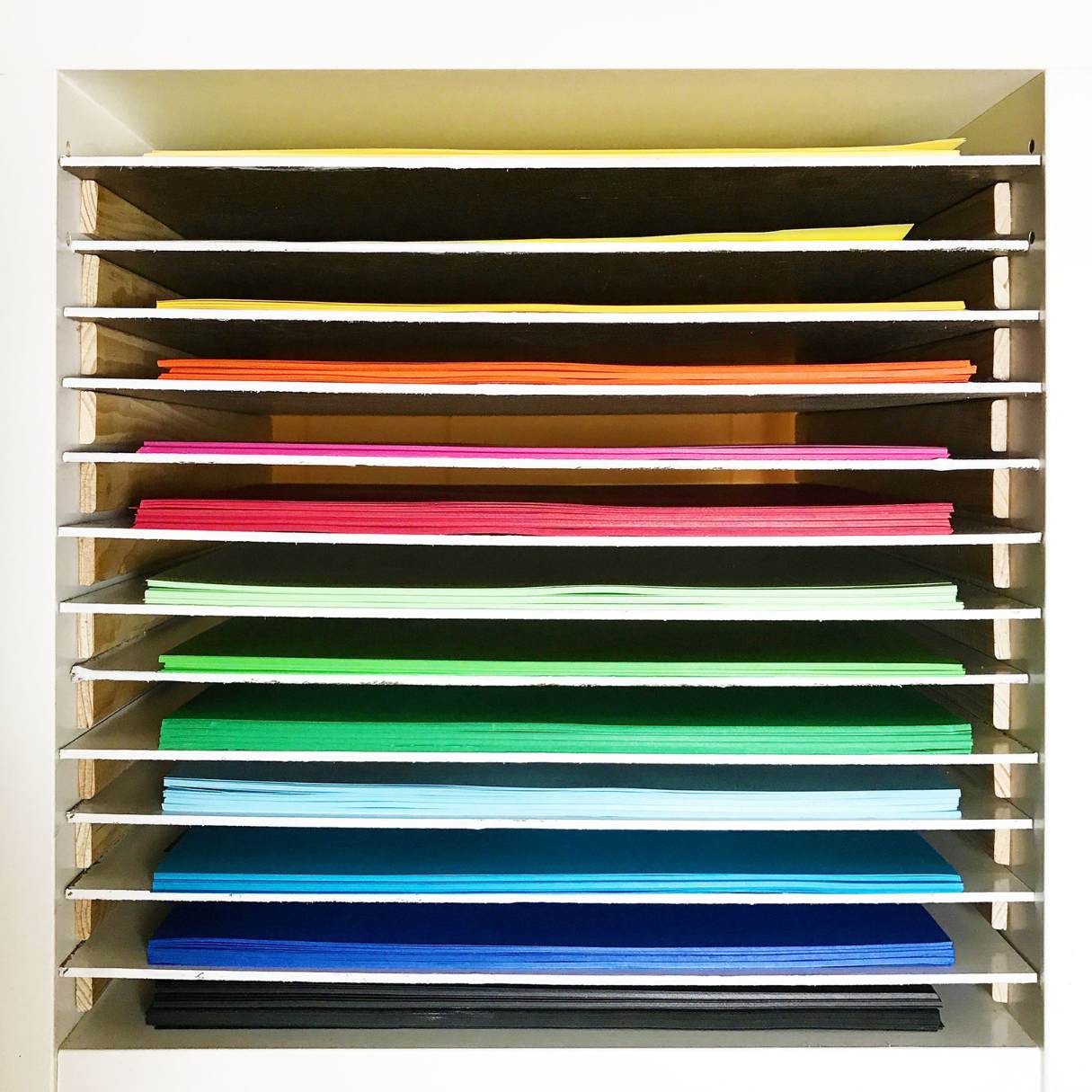
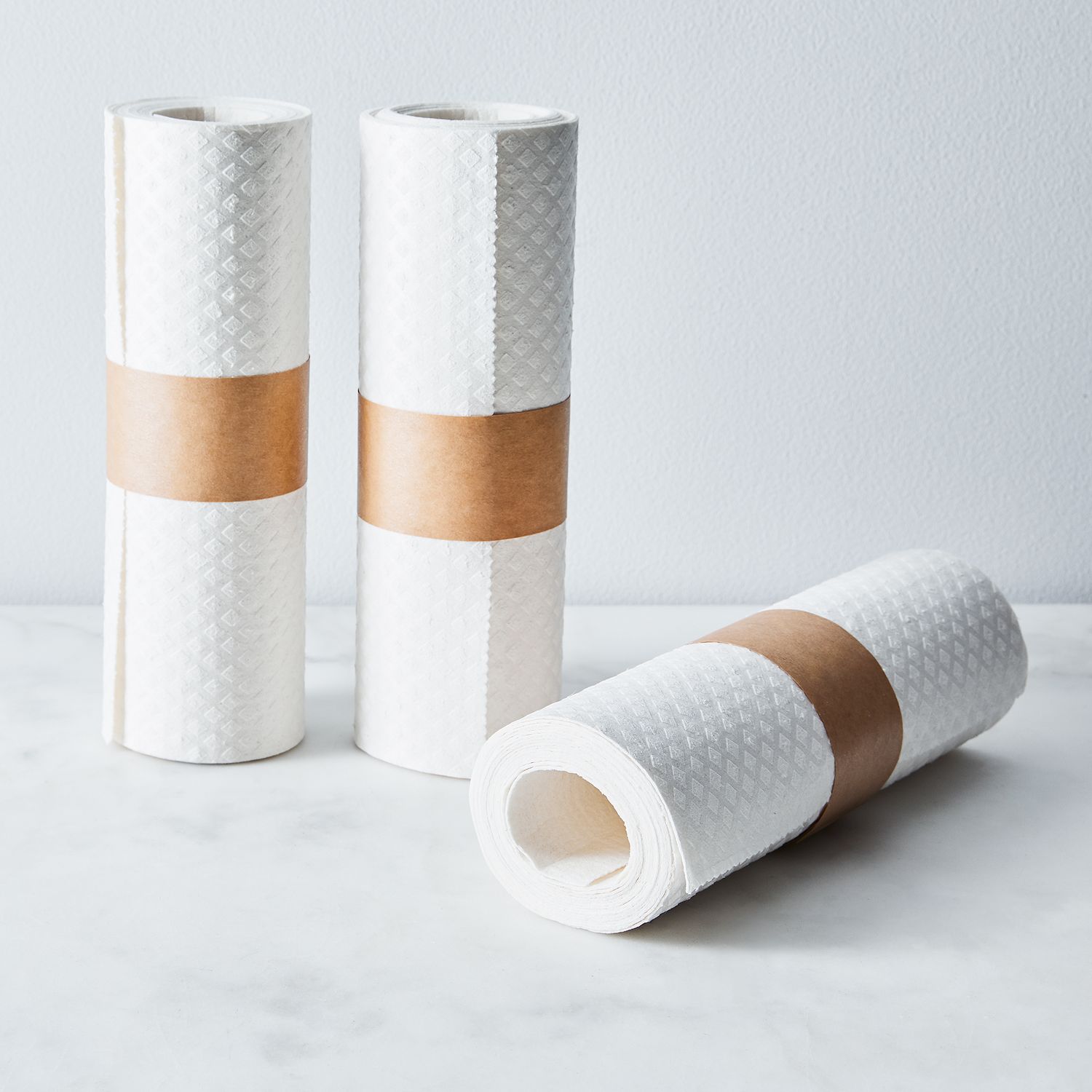



0 thoughts on “How To Store Quilling Paper”